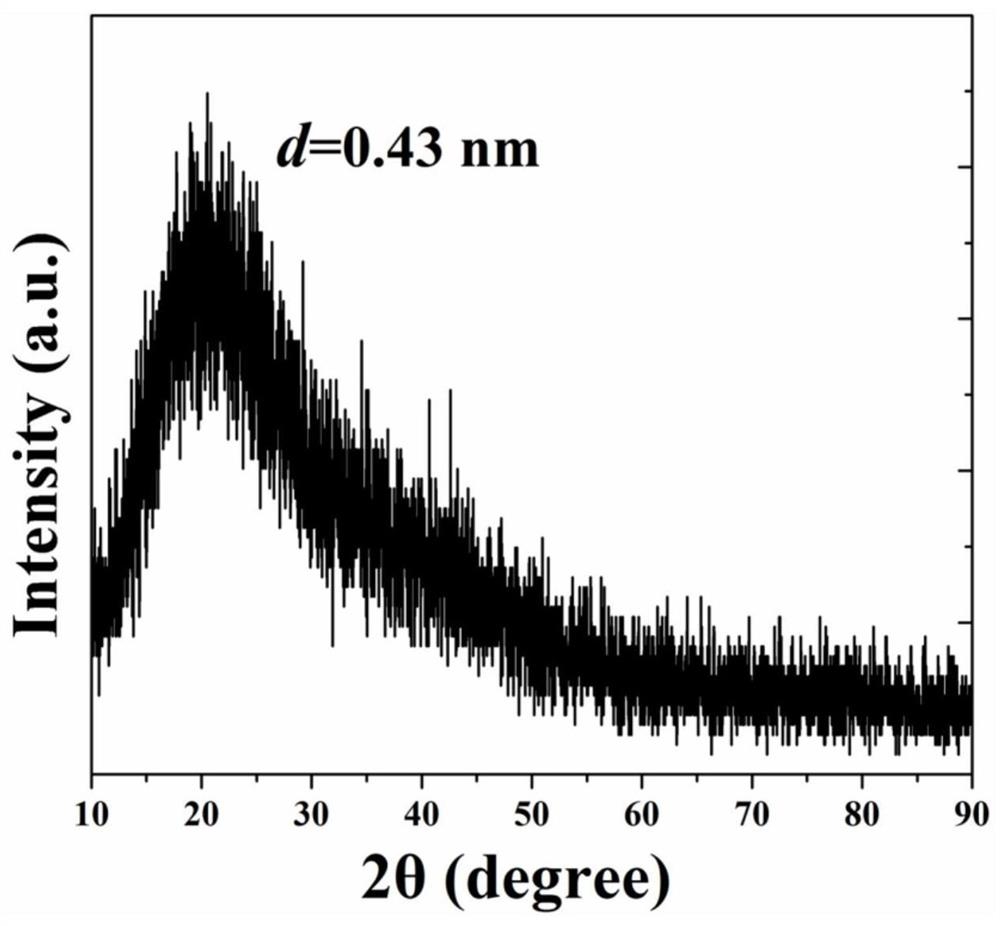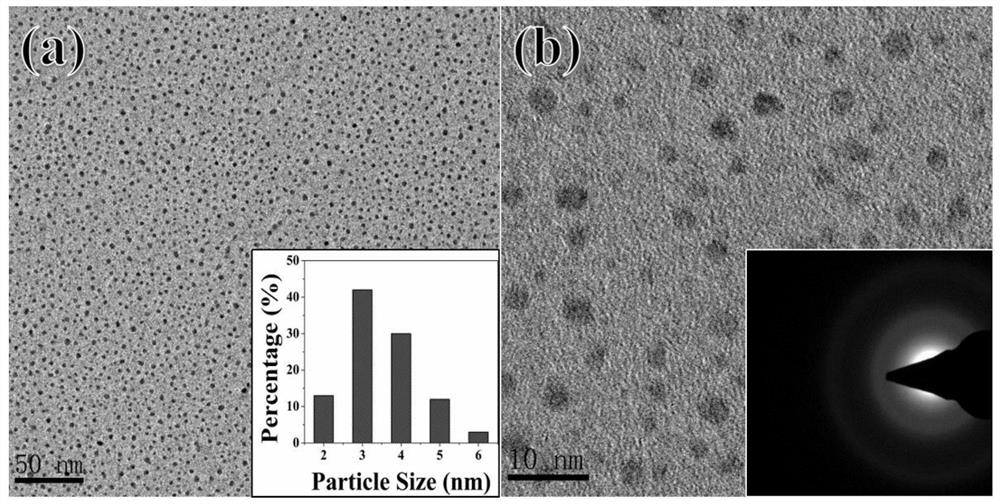Preparation method and application of carbon quantum dots for penetrant testing of stone cultural relics
A technology of carbon quantum dots and stone cultural relics, applied in the field of preparation of carbon quantum dots, can solve the problems of complex preparation equipment, low output of hydrothermal method, long crack path, etc., achieve uniform particle size distribution, excellent fluorescence intensity, particle size The effect of narrow diameter distribution
- Summary
- Abstract
- Description
- Claims
- Application Information
AI Technical Summary
Problems solved by technology
Method used
Image
Examples
Embodiment 1
[0028] A method for preparing carbon quantum dots for penetrating detection of stone cultural relics is carried out as follows:
[0029] Take 500g of Ginkgo biloba leaves as raw material, wash them with clean water for 3 times, mix them with 5.5L of deionized water, and then cook under high pressure at 110°C and 200KPa for 2 hours, then filter out the filtrate, centrifuge the filtrate at 12000rpm for 10min, and take the supernatant Dialyzed with deionized water for two days to obtain the CQDs solution.
Embodiment 2
[0031] A method for preparing carbon quantum dots for penetrating detection of stone cultural relics is carried out as follows:
[0032] Take 500g of Ginkgo biloba leaves as raw material, wash them with clean water for 3 times, mix them with 6L, and then cook under high pressure at 125°C and 180KPa for 2.5h, then filter out the filtrate, centrifuge the filtrate at 10,000rpm for 15min, take the supernatant and use deionized Water dialysis for two days to obtain CQDs solution.
Embodiment 3
[0034] A method for preparing carbon quantum dots for penetrating detection of stone cultural relics is carried out as follows:
[0035] Take 500g of ginkgo leaves as raw material, wash them with clean water for 3 times, mix them with 5L of deionized water, and then carry out high-pressure cooking at 120°C and 195KPa for 3 hours, then filter out the filtrate, centrifuge the filtrate at 11,000rpm for 12min, and take the supernatant for use Deionized water was dialyzed for two days to obtain the CQDs solution.
[0036] Using Ginkgo biloba as carbon source, fluorescent CQDs were prepared. The CQDs were characterized by TEM, XRD, FTIR, XPS and PL data, and the results showed that the as-prepared CQDs were suitable as tracers for water-based systems. Successful field trials demonstrate the potential application of this new CQDs-based technique in heritage seepage monitoring.
[0037] figure 2 The XRD pattern measured by X-ray diffraction with cukα radiation on a rigakud / Max-240...
PUM
| Property | Measurement | Unit |
|---|---|---|
| size | aaaaa | aaaaa |
Abstract
Description
Claims
Application Information
 Login to View More
Login to View More - R&D
- Intellectual Property
- Life Sciences
- Materials
- Tech Scout
- Unparalleled Data Quality
- Higher Quality Content
- 60% Fewer Hallucinations
Browse by: Latest US Patents, China's latest patents, Technical Efficacy Thesaurus, Application Domain, Technology Topic, Popular Technical Reports.
© 2025 PatSnap. All rights reserved.Legal|Privacy policy|Modern Slavery Act Transparency Statement|Sitemap|About US| Contact US: help@patsnap.com



